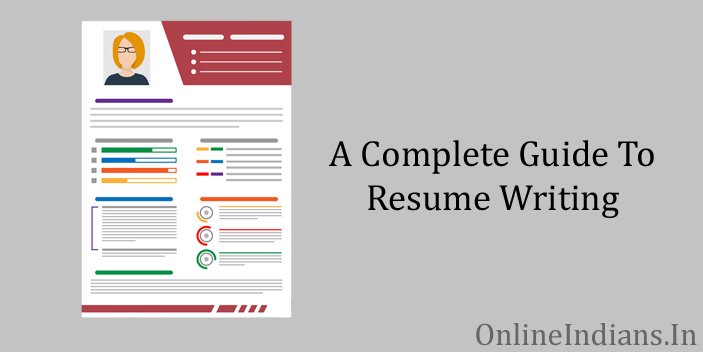Let’s face it: composing a resume could be challenging. Whether you’re spurting your outdated resume or starting afresh, the challenge can quickly become intimidating. Not only do you want to communicate your capabilities and knowledge precisely, but you also want to portray the information in a way that is simple to read and pleasing to the eye. And the pressure to make it speak can make the prospect of placing your fingers on the keyboard a lot more frightening. But writing the perfect resume is not always frightening. It can be simple and easy to follow what you’re doing. Even delegating your resume formation to Resume Writing Services in India would be an apt option if you need a professional opinion and resume.
To appeal to the masses, it’s important to understand what to do to quickly convey your ability. Otherwise, it could be flung into the “no pile” before the potential employer sees the full scope of your expertise.
What Is A Resume?
First things first – what is not a resume. It’s not a record of your work history. It’s not the description of a skill. It is not going to get you a job automatically.
Assume your resume this way: it’s advertising, and you’re a service. You aim to get managers to buy into what you’re offering, which requires an interview with you. We’ve created simple guidelines on how to write a resume to support you. We’re here to break it all down for you. Go ahead and annotate this page before you become frazzled; this is your perfect guide to writing a resume.
-
CHOOSE AN APPROPRIATE FORMAT
To get started, try arranging all your details with a rundown of the resume. This lets you see where your priorities lie, and what parts of your professional history you need to focus on. Most competent resume writers will inform you that there are three key forms of resumes, i.e. chronological, functional, and mixed.
- CHRONOLOGICAL: This is perhaps the most traditional resume format and is suitable for people with a lot of professional experience that is related to the role they’re interested in.
- FUNCTIONAL: If you do not have real work experience because you are a student/recent grad, or you are trying to look to make a career change, a skills-based format is a good bet.
- MIXED: As you might have guessed, the mix resumes borrow from both of the above-mentioned formats. You will incorporate the professional summary and skills category of the functional resume with the job experience section of the chronological resume.
-
CAREFULLY FILL THE CONTACT INFORMATION
Before you delve into what details you should add, it is important to note that the personal data you include will depend greatly on the format you pick.
-
WHAT SHOULD NOT BE INCLUDED IN CONTACT INFO?
Date of Birth-unless explicitly asked in the job ad. The HR manager doesn’t have to know how old you are. It is not necessary for their decision-making and at worst it could lead to age-based discrimination and amateurish e-mail address.
-
USE PROFESSIONAL FONTS
Since employers have only a limited amount of time to examine your resume, it should be as straightforward and as simple to follow as possible. You’re supposed to use a simple clean font like Arial or Times New Roman. Keep the font size between 10 and 12 points. Selecting a simple, functional font will help make your resume appear more presentable. You can also ensure that any unnecessary whitespace is reduced or deleted. Too much space might make your cv seem incomplete, confusing the viewer.
-
PRECISE AND WINNING SUMMARY
It’s not a mystery to everyone that first impressions matter, whether they’re in your situation or your job. If you leave a poor first impression, chances are it’s going to stay put. It’s really difficult, after all, to change someone’s view of you. The same refers to your job search-the HR manager spends about 6 to 8 seconds reviewing each resume. Yeah, your crafted, hand-crafted resume gets just 6 seconds of focus. If of course, you manage to leave a strong first impression.
Your resume should be composed in an active language with no superfluous words. This means using the strong term and if your resume is too lengthy or seems hard to interpret, you might try making phrases shorter or concepts more concise.
-
BRING TO ATTENTION THE ACHIEVEMENTS
Instead of detailing your work duties under the Experience line, choose your top three or four most significant accomplishments in each of your positions. Include if applicable, numbers that quantify your performance for that particular goal or accomplishment.
-
DO NOT HESITATE TO DELETE A SUBHEADING
You will find there are some suggested parts you do not need, whether you are using a resume template or making your own. Don’t have an empty work history section if you are only graduating from college or high school and have not yet held a professional job. Instead, you may substitute related coursework, academic accomplishments, and other activities such as internships or extracurricular projects for the experience portion.
-
HOW MANY PAGES SHOULD YOU ADD?
This is the most debated point of re-writing. Some experts strongly discourage candidates from going over one page, while others contend that it is appropriate in some instances. The fact of the matter is this: if you have information that is important to the role you are applying for, go ahead else stick to one page. If you just add filler, your resume will fail.
Few Final Words
Learning how to write a resume is one thing, actually creating a resume that sticks out is another thing entirely. Without motivation, even the top career experts might stumble across a hurdle or two. You can also outsource resumes to any Resume Writing Services in India or LinkedIn profile writing services in India if you want to upload a resume on a social site to appeal to more employers.
